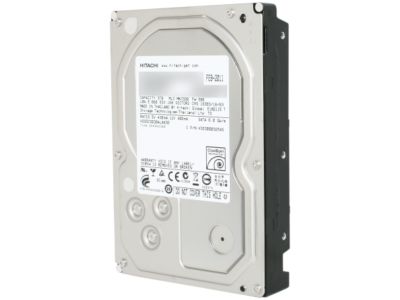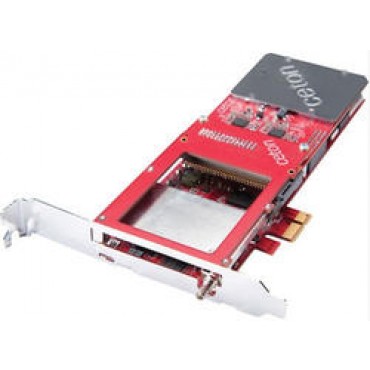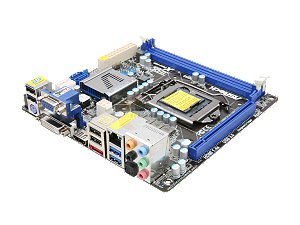Holiday 2011 Mainstream High-End Buyer's Guide
by Zach Throckmorton on December 9, 2011 12:00 AM EST- Posted in
- Guides
- AMD
- Intel
- Sandy Bridge
- CrossFire
- Sandy Bridge E
- Holiday 2011
- NVIDIA
Cinematastic SFF HTPC
I covered small form factor home theater PCs in May, offering both Intel- and AMD-based systems. Both of those rigs came in well under $1000. This guide's HTPC is substantially more capable in every regard, with a price tag to show for it. This SFF HTPC has four primary considerations in mind with its design: video transcoding capability, plenty of storage space for a large media library, Blu-ray playback, and finally the ability to serve as a cable box DVR replacement.
The best video transcoding CPU available on the mainstream market today is without a doubt the Intel Core i7-2600K. You can check out AnandTech's Bench for a good idea of how this chip performs in a wide variety of tasks. Further, Anand thoroughly reviewed the CPU at the start of 2011 upon its launch. It is important to note that the i7-2600K is total overkill for simple HD media playback—that can be accomplished easily by a CPU costing less than $100. Thus, this HTPC is capable of not just media playback, but extremely fast media encoding/transcoding as well.

The tragic flooding throughout southeast Asia, particularly Thailand, has caused a severe disruption of the global hard drive supply chain. It is a bad time to invest in many high capacity hard drives, but if you want to build a computer that can store terabytes of files, you have little choice. Unfortunately, we do not yet know when hard drive prices will return to their pre-flood levels, though it will likely be months from now. Therefore we're dropping over $500 on 6TB of mass storage in the form of two Hitachi HDDs. It's difficult to pay that much for drives that were half that price only months ago, so if you can put off buying lots of storage for several months, you should considering doing so.

As for Blu-ray playback and cable box DVR replacement, we're going with a standard LITE-ON Blu-ray burner that supports 3D BR-Ds and a Ceton InfiniTV quad-tuner. The Blu-ray burner costs about twice as much as Blu-ray readers, so if you are not interested in burning BR-Ds, you can save some money by foregoing that capability. Note that this is an OEM drive—you will have to purchase appropriate software or use a freeware application with it. (My personal favorite freeware BR-D player is Media Player Classic - Home Cinema, but there are others that also work well.) The Ceton InfiniTV essentially acts as a replacement for four cable boxes, allowing you to view and/or record up to four HD cable programs simultaneously. This is a very powerful card when combined with a LAN. It can certainly serve as a centralized multistream HD cable player for an entire household, and it works without issue with Windows 7's Media Center.

We've selected ASRock's Z68M-ITX/HT mini-ITX motherboard to tie all of the components together. This is a very feature-rich ITX board that includes both HDMI out as well as DVI and optical S/PDIF interfaces. As it is a Z68-chipset board, it also supports the i7-2600K's impressive overclocking abilities. The only real limitation of the board is its sole PCIe x16 lane. The Ceton tuner card uses a PCIe x1 interface, which can be up-plugged without issue into the ASRock board. However, if the Ceton tuner is in place, there are no additional expansion slots—and with only four SATA ports, you are limited to four total SATA devices. In this case, the Blu-ray drive, an SSD boot and application drive, and two mass storage HDDs.
For the SSD, we're recommending Crucial's M4 128GB SATA III drive. These drives have a reputation for reliability and while not the fastest SSDs, they fare quite well against the competition. We're opting for a 128GB capacity SSD primarily to accomodate potentially large video encoding software suites, like Adobe's CS5.5 Master Collection. If you don't need as much space for your OS and application drive, you can save about $100 by going with the 64GB variant.
Because the ITX board has only two DDR3 slots, we're limited to 8GB (a single 2x4GB kit) unless you're interested in spending substantially more money on a 2x8GB kit of DDR3. For example, CS5.5 can frequently eat more than 8GB of RAM when I'm transcoding HD video, but whether a 16GB kit is worth more than a $100+ cost increase compared to an 8GB kit will depend on your particular software usage.

Powering everything we have Silverstone's Strider Plus ST50F-P PSU. This model is one of the smallest ATX power supplies, and its full modularity cuts down on cable clutter. You can read more about this excellent PSU in Martin's recent review. Finally, housing all of these components is Lian-Li's venerable PC-Q08A. This has proven to be my favorite ITX case for a number of reasons. First, I think it looks very nice. Second, the combination of the 140mm front intake fan and 120mm top exhaust fan means it runs cool for an ITX box. It is somewhat large for an ITX chassis so stuffing all of these components into it will be challenging (as all ITX builds are) but not maddeningly difficult (as some ITX builds can be, especially for those of us with larger hands). Don't worry—the stock i7-2600K CPU cooler clears the bottom of the PSU with some headroom to spare in the PC-Q08A. Finally, it should be noted that the PC-Q08 is available in black and red as well as the silver chassis in the list below.
| Component | Product | Price |
| CPU | Intel Core i7-2600K | $320 |
| Motherboard | ASRock Z68M-ITX/HT | $120 |
| RAM | Crucial 8GB (2x4GB) DDR3 1333 | $40 |
| SSD | Crucial M4 128GB | $210 |
| HDDs | (2) Hitachi Deskstar 3TB 5400rpm | $520 (total) |
| TV tuner card | Ceton InfiniTV Quad-tuner | $294 |
| Optical drive | LITE-ON IHBS112-29 | $100 |
| Power supply | Silverstone Strider Plus ST50FP-P 500W | $80 |
| Case | Lian-Li PC-Q08 | $110 |
| Operating system | Microsoft Windows 7 Home Premium 64-bit (OEM) | $100 |
| Total: | $1894 | |
If you're more interested in using your PC to play video games than movies, we have a system for you on the next page.










52 Comments
View All Comments
crackedwiseman - Friday, December 9, 2011 - link
Why would you use a GTX560? My complaint has little to do with performance - I don't have time to game in earnest, so that's not my objection. My problem lies in the lack of mult-display capabilities. For productivity purposes - particularly programming - a pair of 1080p screens is no longer cutting it for. With your config, the user is forced to invest either in expensive 2560*1600 screens or an entire new video card to get around this limitation - and with a base price of $2100 system, lack of expandability in this area is unforgivable.JarredWalton - Friday, December 9, 2011 - link
I don't know many people that use more than two displays, but obviously if that's your goal you can go with a different GPU. We mention no fewer than six potential video cards to consider on the "for work" system: GTX 560, HD 6850, GT 440, HD 6670, and a couple Quadro and FirePro options as well. It depends on whether you feel CUDA support or multi-monitor support is higher priority really; I'd personally go with CUDA (it really does help with Premiere), but the alternatives are there for a reason.A5 - Friday, December 9, 2011 - link
Yeah. I'd love to work somewhere where 3x 1080p monitors is commonplace...the standard issue at my workplace is 2x 1680x1050 monitors.DanNeely - Friday, December 9, 2011 - link
Same here, and it took about half a year of begging the helpdesk to get my 2nd upgraded from 1280x1024 to 1680x1050. I half suspect it was because I kept the ticket open long enough that one of the IT bosses OKed it because I was screwing up his metrics.crackedwiseman - Saturday, December 10, 2011 - link
I spend a lot of time programming in C/C++ with inline assembly (not exactly easy work, but it pays off here and there, especially when dealing with encryption and error correction algorithms). This is documentation-heavy work, and I often find myself dedicating as much screen-space to various documentations of the processors I'm optimizing for, compiler options, etc as I do to my IDE - screen space gets cramped fast. I got my multi-monitor setup for myself - doesn't cost to much these days, when 3+ monitors on a single card is not rare and 1080p monitors (admittedly crappy, but pixels are pixels) available for under $250 apiece. Certainly isn't cheap, but it's not prohibitive, and I'd swear by it as means of enhancing productivity for many compute-intensive tasks - I have some friends that do a lot of 3D design work, and they've gone to a tri-monitor setup without looking back.The way I figure it is, if I'm going to spend 6+ hours a day working with my computer, it had better be a nice experience - and being forced to tab through my information is not a nice experience.
apriest - Monday, December 12, 2011 - link
I have 3x 1920x1200 monitors on my workstation (photo/video editing), running on a first gen Core i7, P55 chipset, striped X25-M SSDs for boot drive, and a Radeon 5860, a pretty well-rounded machine. I occasionally play games on all three screens, but mostly older games like Far Cry 2 or Burnout Paradise which run pretty smooth at 5760x1200. I'm thinking of upgrading this spring to X79 and 6 or 8 core (if I could put a Xeon in there) to get some more horsepower and especially more RAM (32GB wouldn't be that expensive with 8 slots, and I'm maxed out at 16GB). I'd like CUDA support for some of my video rendering apps, but I'm discovering no cheap way of keeping my triple screens without going SLI or something. Doesn't appear that any nVidia card can run three screens unless it's a dual chip design or something, and then I wonder if two cards wouldn't be a better option anyway for more CUDA performance and better cooling? Just seems odd that my 2+yr old sub-$400 ATI card does something that can't be touched for that price today by nVidia, or am I missing something? I don't mind paying for something if the performance pays off and lets me bill out more, like the SSDs and 16GB I put in my current machine, but since my goal is not high end gaming I don't really want to go overkill on a $1000 video card setup either! Also, will PCI Express 3.0 video cards be out later this spring and should I just stick with my current ATI card until then? What do you guys think? Suggestions?BSMonitor - Friday, December 9, 2011 - link
Dang, are these drives still overpriced. Clearly these companies need other shops besides Taiwan.ggathagan - Friday, December 9, 2011 - link
Or Thailandfokka - Friday, December 9, 2011 - link
i'm happy to see you using a lian li pc 9f case in your productivity build! it's much better designed, than the a05fn dustin reviewed just yesterday and that's why i used it recently for my own build. really great case and in my opinion the best looking option out there!Araemo - Friday, December 9, 2011 - link
On the Z68 boards, how much will using Intel RST w/ a 64GB SSD suck compared to actually putting your OS and most common apps directly on the SSD?I have been waiting for 128GB SSDs to reach $100-ish before I buy one, because I don't think I can fit enough on a 64GB to be happy.. but if the caching works well enough, I generally only go between a couple games at a time, and a few other apps, all of that should fit in a 64GB cache, along with the OS and such.. that should be plenty to keep me snapping 90% of the time.. if the technology really works - so have any of the Anandtech guys used iRST on their main systems for an extended period yet to give a good review of it?